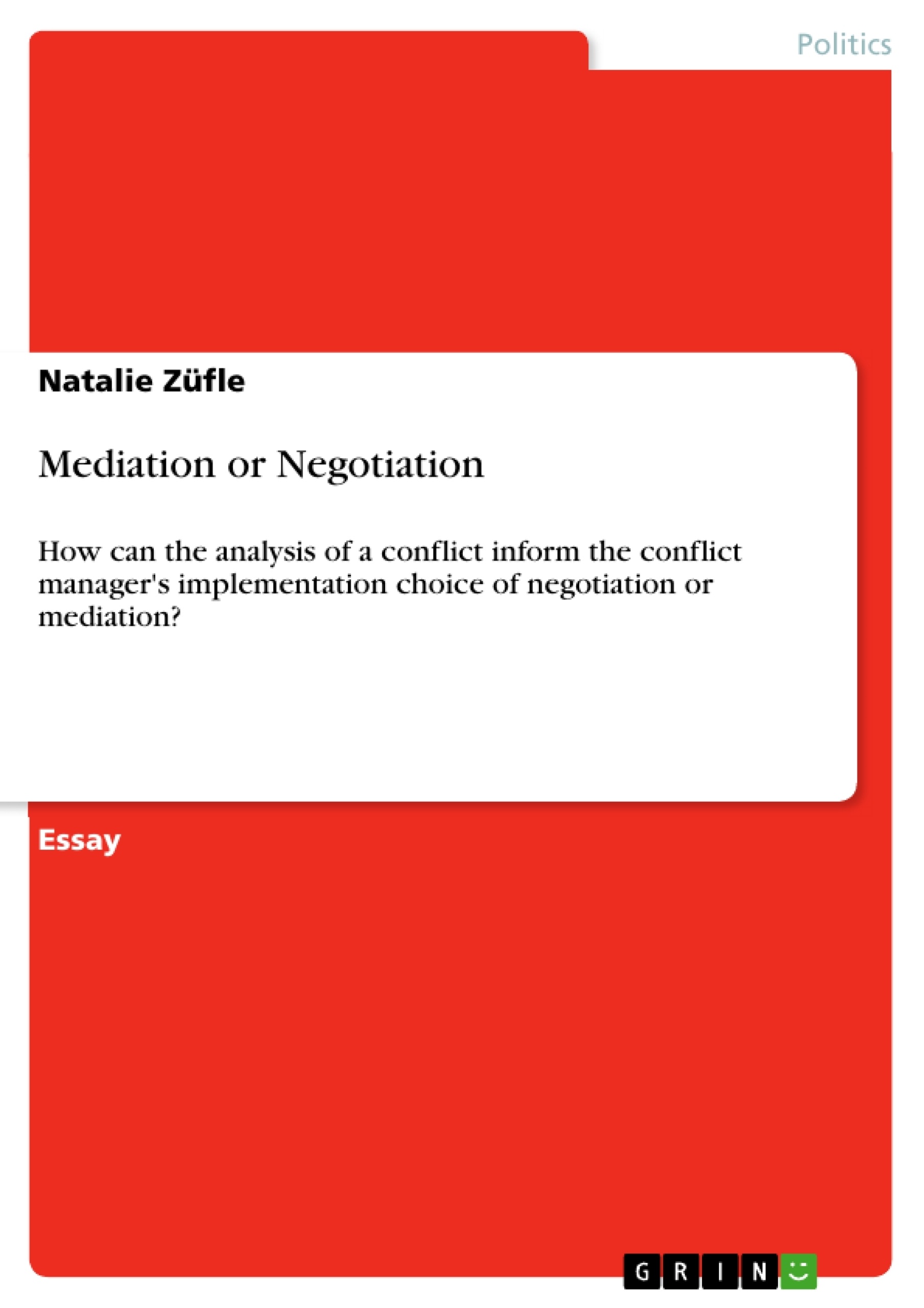The analysis of the nature of and the context in which a conflict takes place facilitates the formulation of appropriate conflict management strategies in order to settle or de-escalate it. Scholars offer various models how find an apt method through exploring a conflict’s structure. Which approach is the most suitable one depends on the conditions of the respective conflict.
Inhaltsverzeichnis (Table of Contents)
- Conflict Management
- Analyzing a Conflict
- Negotiation vs. Mediation
- Preconditions for Negotiation and Mediation
- Mediation as a Solution to a Stalemate
- The Contingency Framework of International Negotiation
- The Changing Nature of Conflicts
Zielsetzung und Themenschwerpunkte (Objectives and Key Themes)
The main objective of this text is to illustrate how the analysis of a conflict can inform a conflict manager's decision to use negotiation or mediation. The text explores the relationship between conflict analysis and conflict management strategies, emphasizing the importance of understanding the nature and context of a conflict to determine the most appropriate approach.
- The relationship between conflict analysis and conflict management strategies
- The use of negotiation and mediation in resolving conflicts
- The conditions under which negotiation and mediation are most effective
- The changing nature of conflicts and their implications for conflict management
- The importance of understanding the interests and identities of the parties involved
Zusammenfassung der Kapitel (Chapter Summaries)
The text begins by introducing the concept of conflict management and highlighting the key distinction between negotiation and mediation. It argues that understanding the nature and context of a conflict is crucial for determining which approach is most effective. The text then delves into the process of conflict analysis, outlining various factors that should be considered, including the sources of the conflict, the parties involved, the issues in contention, and the tactics employed by all parties.
The text then moves on to a discussion of the conditions under which negotiation and mediation are most likely to be successful. It highlights the importance of considering the intensity of the conflict, the power dynamics between the parties, and the potential for a mutually beneficial outcome. The text further emphasizes the role of mediation in resolving stalemates and the importance of understanding the cost-benefit analysis of different conflict management strategies.
The text then examines the Contingency Framework of International Negotiation, which provides a comprehensive framework for analyzing conflicts and determining the most appropriate approach. Finally, the text concludes by discussing the changing nature of conflicts and the need to take into account factors such as the identities of the parties involved.
Schlüsselwörter (Keywords)
The text focuses on key concepts such as conflict management, negotiation, mediation, conflict analysis, and the Contingency Framework of International Negotiation. It also explores the importance of understanding the nature and context of conflicts, the interests and identities of the parties involved, and the effectiveness of different conflict management strategies.
- Quote paper
- Natalie Züfle (Author), 2009, Mediation or Negotiation, Munich, GRIN Verlag, https://www.grin.com/document/180097



